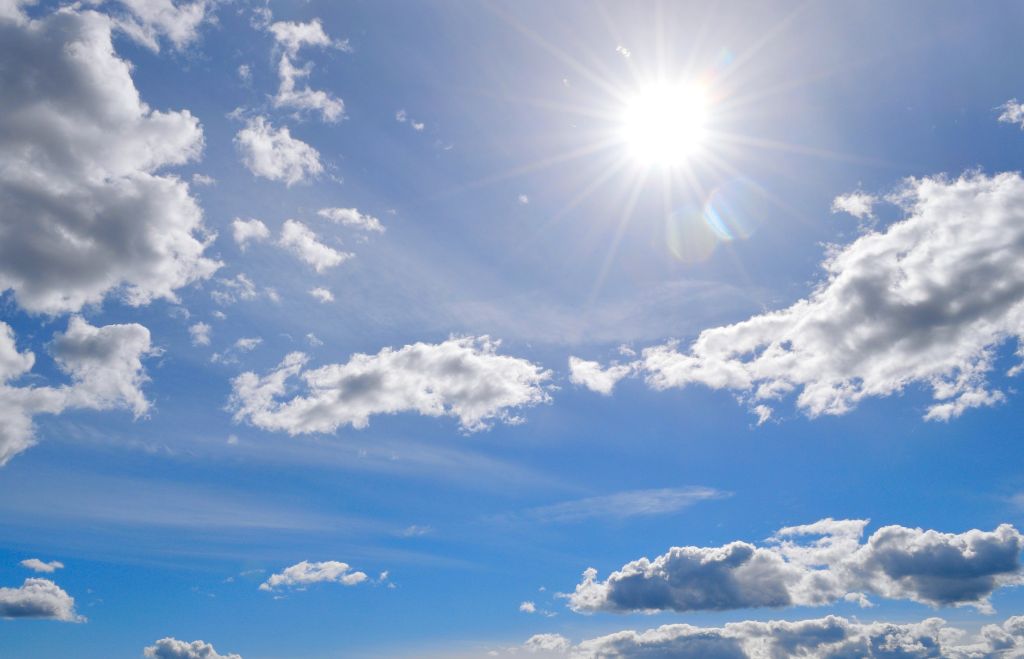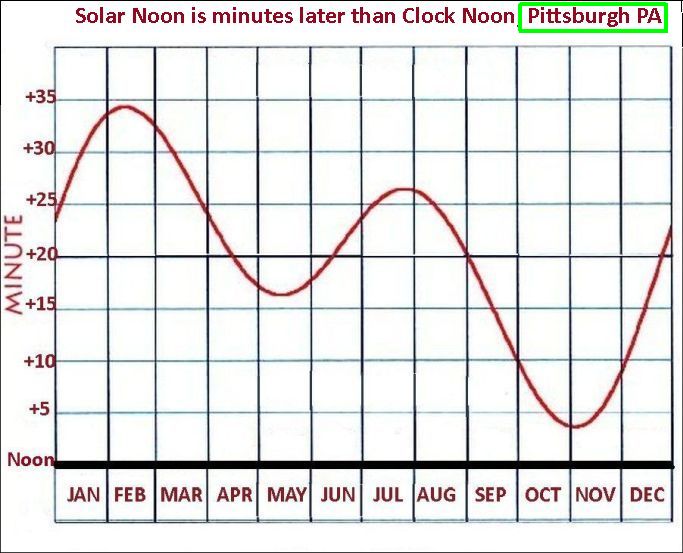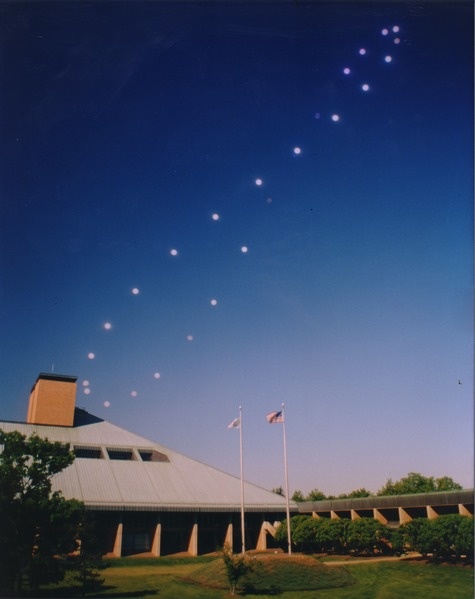
3 January 2022
When I look up at the sun to estimate the time, I expect it to be noon when the sun is at its highest point. In Pittsburgh the sun’s highest point, called solar noon, is always later than clock noon and it varies. It’s 3 minutes after noon (12:03p) in early November, 34 minutes in early February (12:34p). The reason is explained by The Equation of Time and our location in the Eastern Time Zone.
The equation of time is the difference between time measured using a sundial, also known as true or apparent solar time, and time measured using a clock, also known as mean solar time. [mean is 24 hours] …
The length of a solar day [from solar noon to solar noon] is not exactly 24 hours long. It varies throughout the year because of the elliptical shape of Earth’s orbit and its axial tilt. It is longer than 24 hours around the summer and winter solstices and shorter than 24 hours around the spring (vernal) and fall (autumnal) equinoxes.
— timeanddate.com: The Equation of Time
Earth’s eccentric orbit and axial tilt affect the location of the Sun as seen from Earth. If you take a photograph of the Sun at the same place and [Standard] time every day for a year its location varies in a lazy figure 8 called an analemma.
Beyond the analemma, solar noon in Pittsburgh is always later than clock noon because we are longitudinally more than halfway west inside the Eastern Time Zone. For instance today, 3 Jan 2022, solar noon is at:
- 11:37am in Bar Harbor, Maine
- 12:00pm in New York City
- 12:24pm in Pittsburgh and
- 12:49pm in Indianapolis.
A graph of the number of minutes solar noon occurs before/after clock noon always follows the same curve below, echoing the analemma. In this graph I have altered the Y axis to match Pittsburgh’s solar offset from Standard Time. The curve is always above zero because solar noon is always later than clock noon in Pittsburgh.

For clock-oriented humans it’s hard to know what time it is by looking at the sun.
For further reading on the Equation of Time: Do you like math, astronomy, geometry? Check out the formulas in Wikipedia’s Equation of time article.
(photos and graph from Wikimedia Commons; click on the captions to see the originals)
p.s. This table shows solar noontime in Pittsburgh at key points in 2022, derived from data at https://www.timeanddate.com/sun/usa/pittsburgh
Pittsburgh's Solar Noon in 2022

This explains so much! I’ve noticed (from time to time) that the sun hasn’t been perfectly overhead at noon and that some sunny afternoons felt brighter or dimmer than they “should” based on part of my brain that was paying attention.